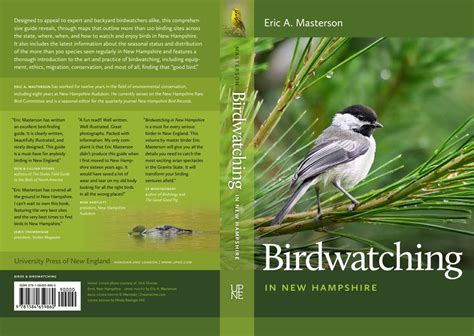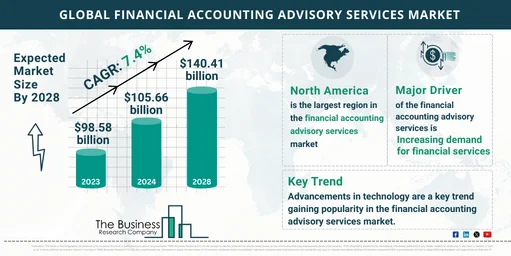The conservation of red listed species is a critical issue in global biodiversity preservation. Red listed species, categorized by their risk of extinction, range from endangered to critically endangered. This practical guide aims to illuminate the importance of safeguarding these vulnerable species, offering insights into their classification and the necessity of their protection. By understanding the diverse categories of red listed species and the current conservation efforts, we can better appreciate the urgency of the task. This guide will explore effective strategies, legal considerations, and collaborative efforts essential for meaningful progress in conservation. Join us in mastering the art of red listed species conservation and making a tangible impact.
xotools.xyz will lead a thorough examination of this topic.
1. Introduction to Red Listed Species
The International Union for Conservation of Nature (IUCN) Red List serves as a vital global inventory of species facing extinction. It categorizes animals and plants into various threat levels, from vulnerable to critically endangered, each signifying increasing risk of disappearing forever. This classification system acts as a crucial tool for conservationists, providing a clear picture of the species most urgently needing protection and informing conservation strategies.
Critically endangered species, for example, require immediate and intensive intervention to prevent their extinction. By understanding the different threat levels, conservationists can prioritize actions and allocate resources more effectively, focusing on those species most in need. The Red List not only highlights the dire situation faced by these species but also serves as a powerful indicator of broader environmental challenges such as habitat loss, climate change, and human activities.
By focusing on the Red List’s classifications and addressing the root causes of decline, conservationists can work towards mitigating threats and implementing strategies to ensure the survival of endangered species. This section will delve deeper into the specifics of each Red List category and emphasize the critical importance of prioritizing conservation efforts for species at risk.
2. Understanding the Categories of Red Listed Species (e.g., endangered, critically endangered)
The Red List classifies species based on their extinction risk, ranging from “Least Concern,” signifying widespread and abundant populations, to “Critically Endangered,” indicating an extremely high risk of disappearing from the wild. This categorization system is essential for prioritizing conservation efforts and allocating resources effectively.
“Near Threatened” species are close to qualifying for a higher risk category, while “Vulnerable” species face a high risk of extinction. “Endangered” species are at a very high risk of extinction. Each category reflects the urgency and severity of the threats faced by the species, guiding conservation actions to protect and preserve biodiversity. Understanding these classifications is key to targeting appropriate measures for effective conservation.
3. Importance of Red Listed Species Conservation
Red-listed species are critical to maintaining the delicate balance of global biodiversity and ecological well-being. They play essential roles in their ecosystems, acting as pollinators, seed dispersers, and key components of food webs. Their extinction triggers cascading consequences, disrupting these crucial processes and impacting countless other species and the environment itself.
Furthermore, red-listed species act as sentinels of overall environmental health. Their declining populations signal broader environmental concerns such as habitat loss, climate change, and pollution, prompting a need for comprehensive conservation actions. Protecting these species not only preserves their unique genetic diversity but also enhances the resilience and adaptability of entire ecosystems.
Conservation efforts for red-listed species provide direct benefits to human communities by safeguarding vital ecosystem services. These services support agriculture, water resources, and climate regulation, contributing to a healthier planet and promoting sustainable development for future generations.
4. Research and Awareness: Gathering Information about Red Listed Species
The cornerstone of successful red-listed species conservation lies in a combination of comprehensive research and heightened public awareness. Thorough research is vital for understanding the unique needs and threats facing these species. This includes studying their habitat preferences, population trends, behavioral patterns, and interactions with other organisms. Detailed data allows for accurate assessments of their conservation status and identifies critical areas requiring protection or restoration.
Engaging the public and stakeholders in conservation efforts is paramount. Educational programs, workshops, and media outreach play a crucial role in emphasizing the importance of red-listed species and highlighting the necessary actions for their protection. By fostering a deeper understanding of these species and their struggles, we can generate support for conservation initiatives and encourage behavior changes that reduce threats.
Collaboration among researchers, conservationists, and local communities is essential for maximizing the impact of these efforts. Sharing research findings and success stories inspires collective action and drives policy changes. By prioritizing comprehensive research and increased awareness, we can develop targeted conservation strategies and ensure the long-term survival of these endangered species.
5. Conservation Efforts and Strategies
Saving endangered species requires a multi-pronged approach, tailored to their unique threats. **Habitat protection** plays a crucial role, encompassing the creation and management of protected areas to safeguard critical environments. Restoring degraded habitats is equally important, allowing species to recover.
**Species-specific management plans** are vital for addressing specific threats like poaching, invasive species, and climate change. These plans may include legal protections, captive breeding programs, and reintroduction efforts. Additionally, **mitigating human-wildlife conflicts** and promoting **sustainable practices** are essential to reduce human impact.
**Collaboration** with local communities and stakeholders is crucial, incorporating local knowledge and fostering community support. **Monitoring and evaluation** are essential to assess the effectiveness of conservation efforts and ensure they are constantly adapted to changing conditions. By combining these strategies, we can create a comprehensive and dynamic approach to protecting endangered species.
6. Legal and Ethical Considerations in Red Listed Species Conservation
## Protecting Red-Listed Species: Balancing Legal Frameworks and Ethical Considerations
Conserving endangered species necessitates a careful consideration of both legal and ethical implications. Legally, many nations have enacted strong protections, like the Endangered Species Act and CITES, to curb illegal activities such as hunting, trade, and habitat destruction. These regulations serve as vital safeguards, ensuring these species receive the necessary protection to thrive.
Beyond legal frameworks, ethical considerations are paramount. Conservation efforts must acknowledge the intertwined needs of endangered species and local communities. Addressing potential conflicts and safeguarding human livelihoods are essential. Engaging with local populations and incorporating their perspectives into conservation strategies fosters mutually beneficial solutions.
Transparency and accountability are equally crucial. Conservation organizations and stakeholders must maintain ethical conduct, ensuring their actions are effective and respectful. This includes transparent reporting on conservation outcomes and responsible resource management.
By navigating the complex intersection of legal and ethical dimensions, we can build trust, cultivate collaborative efforts, and ensure that red-listed species are safeguarded through both just and effective conservation practices.
7. Collaborative Efforts: Working with Conservation Organizations and Communities
Protecting endangered species requires a collaborative approach, bringing together diverse partners to maximize impact. Working with conservation organizations is crucial, as they offer a wealth of resources, expertise, and established networks. This collaborative spirit allows for pooling resources, sharing knowledge, and developing more effective strategies.
Equally important is engaging with local communities. Their involvement ensures that conservation plans are culturally sensitive and address the needs of those directly affected. Local knowledge and traditional practices offer invaluable insights into the ecology and behavior of endangered species, aiding in the development of sustainable solutions. Building trust and cooperation with communities leads to lasting conservation success.
Partnerships with government agencies, academic institutions, and the private sector further strengthen these efforts. By aligning goals and sharing responsibilities, these collaborations can drive innovation and amplify the impact of conservation actions. This synergistic approach, leveraging diverse strengths and resources, ensures the most effective protection for endangered species.
8. Monitoring and Evaluating Conservation Progress
The effectiveness of conservation efforts aimed at protecting red-listed species hinges on ongoing monitoring and evaluation. Regularly tracking population sizes, habitat health, and the outcomes of conservation actions is crucial. This data reveals trends, indicating whether species are recovering or encountering new threats. Utilizing technology, such as satellite imagery and camera traps, improves the accuracy and timeliness of information gathered.
Analyzing this data through evaluation determines the efficacy of conservation strategies and informs necessary adjustments. This process examines the impact of interventions, identifies their strengths and weaknesses, and adapts management plans based on the findings. Collaboration with research institutions and conservation organizations enhances the evaluation process, providing expert knowledge and deepening the understanding of conservation outcomes.
A continuous cycle of monitoring and evaluation allows conservationists to adapt their strategies to evolving conditions and emerging challenges. This iterative approach ensures that conservation efforts remain relevant and impactful, contributing to the long-term survival of red-listed species and the health of their ecosystems.
Effective conservation of red listed species requires a multifaceted approach, encompassing understanding their risk categories, implementing targeted strategies, and addressing legal and ethical considerations. By fostering collaboration among conservation organizations, local communities, and stakeholders, and by rigorously monitoring and evaluating progress, we can enhance our efforts to protect these vulnerable species. The urgency of safeguarding red listed species underscores the need for dedicated action and ongoing commitment. Together, we can make a significant impact on preserving biodiversity for future generations.
xotools.xyz









